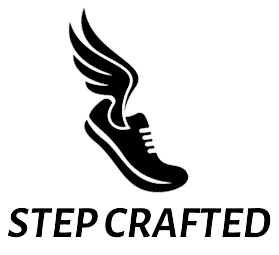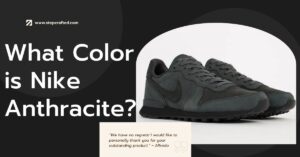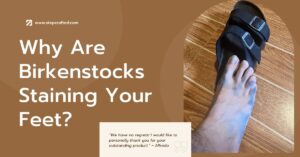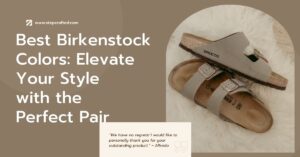Understanding Size Chart
When you come across the notation What does EW mean in shoe size, it’s an indication that you’re looking at a shoe that offers a broader width. In the world of shoe sizes, EW stands for extra wide, which is an equivalent to the H width.
Contents
ToggleThis measurement is designed for those who find normal width shoes a tight squeeze. It’s fascinating how this directly reflects on the manufacturer’s commitment to catering to every part of the population. Common notations like these ensure that everyone has the chance to wear comfortable footwear.
In my experience, noticing a size listed with an EW has often meant the difference between a comfortable day and one spent dealing with the discomfort of ill-fitting shoes. For those not in the know, stumbling upon these notations can be a game-changer.
They are not just letters and numbers but a gateway to a better fit. If a shoe is available in EW, it signifies that the manufacturer has taken steps to accommodate those needing extra width. This is particularly important in a world where over 90% of the population is considered to have a normal width foot, leaving the others searching for a suitable option.
Male Size Chart
| Width Category | US Sizes | UK Sizes | EUR Sizes |
|---|---|---|---|
| Men’s Normal or Regular Width (*D or *M) | 6-14 | 5-13 | 36-52 |
| Men’s Wide Width (*EE, *EW, *W) | 6-14 | 5-13 | 36-52 |
| Men’s Extra Wide Width (*EEE) | 6-14 | 5-13 | 36-52 |
| Men’s Narrow Width (*B) | 6-14 | 5-13 | 36-52 |
Explanation of Width Notations:
- *D or *M represents Men’s Normal or Regular width.
- *EE, *EW, *W are indicators of Men’s Wide width.
- *EEE signifies Men’s Extra Wide width.
- *B denotes Men’s Narrow width.
Female Size chart
| Width Category | US Sizes | UK Sizes | EUR Sizes |
|---|---|---|---|
| Women’s Normal or Regular Width (*B or *M) | 4-12 | 2-9 | 35-43 |
| Women’s Wide Width (*C or *W) | 4-12 | 2-9 | 35-43 |
| Women’s Narrow Width (*A) | 4-12 | 2-9 | 35-43 |
Explanation of Width Notations:
- *B or *M indicates Women’s Normal or Regular width.
- *C or *W signifies Women’s Wide width.
- *A denotes Women’s Narrow width.
Featured Boots Recommending Sizes Tips
EW in shoe size means an extra wide width. This width is equivalent to offering a broader fit for those who find regular widths too snug. Designed to cater to individual needs, EW sizes provide comfort and style for people with wider feet, ensuring every step feels right. Below are some general tips for you to find the best fit.
- Understand Your Feet: Recognize that no two feet are alike. Comfort and fit are subjective, making it difficult to recommend a one-size-fits-all solution. Measure your feet to start on the right foot.
- Know Your Size: If you’re familiar with a brand of boots, stick to the size you usually wear. Brand consistency can be a reliable indicator of fit.
- Consider the Brand: When trying a new brand, remember sizes from similar styles of boots you’ve owned. This can guide your decision on what size to order.
- Adjust for New Purchases: For your first pair of workboots, you might want to start with 1/2 a size down from your normal shoe size. This can often lead to a more proper fit.
- Sizing Between Sizes: If you find yourself between sizes, leaning 1/2 size up can ensure a comfortable fit without being too loose or too tight.
- Broad Range and Commitment: Our commitment to our customers includes providing a broad range of sizes and styles. While we aim to offer general advice and guidelines, there’s no guarantee that a certain style or size will fit every individual perfectly.
- Familiarity Helps: Being familiar with the fit and feel of different brands and styles can assist in making an informed decision. Always wear what feels best for you, keeping in mind that comfort is subjective.
- Remember Your Previous Choices: Don’t forget to look inside the shaft or on the bottom of your current boots to remember the size and fit that worked for you in the past.
By adhering to these tips, you can navigate the range of sizes and widths to find the boots that offer the best fit, style, and comfort for your feet, whether you’re opting for an EW width or another size.
Finding the Proper Fit Tips
When searching for the perfect EW (extra-wide) shoe or boot, understanding what EW means is just the beginning. It’s about much more than just the size; it’s about the width and ensuring your feet have the proper fit for comfort, especially if you’re going to spend an extended time with your feet inside them, whether on a carpeted floor or any surface.

The fit of your shoe significantly affects how you wear them throughout the day, from an afternoon stroll to a full day on your feet. Keep in mind these tips to find your best fit.
- Plan for the Afternoon: Your feet can swell from morning to afternoon, so it’s wise to try on new shoes later in the day to ensure a proper fit.
- Wear the Right Socks: The socks you plan to wear with your boots or shoes can make a big difference. Thicker socks can cushion your feet or fill out shoes that feel a tad spacious, whereas thinner ones are suitable for a snugger fit.
- Check for Heel Slippage: A new shoe might allow for some heel slippage, which should ideally disappear as the sole becomes less stiff and more flexed. However, excessive slippage means the fit isn’t right.
- Leather Stretches: If the shoe feels slightly tight around the instep or width, keep in mind that leather will stretch over time. However, it should not be uncomfortably tight.
- Snug Instep: A proper fit means the shoe feels snug around the instep—not constricting but supportive. This is especially important in slip-on or Pull-on styles, where the instep’s fit helps keep the shoe in place without slippage.
- Give It Time: Allow your new shoes some time to adjust to your feet. Wear them for short periods around the house on a carpeted floor to break them in gently.
By following these tips and understanding what EW in shoe size truly means, you’re well on your way to finding shoes that fit perfectly and provide the comfort your feet deserve. Remember, the proper fit is not just about size; it’s about how your shoes feel and support your feet from one step to the next.
Double-H® Boots Size Chart
Foot Length
| Size | Foot Length (inches) | Foot Length (cm) |
|---|---|---|
| 4 | 8 2/3″ | 22.0 |
| 4.5 | 8 5/6″ | 22.4 |
| 5 | 9″ | 22.9 |
| 5.5 | 9 1/6″ | 23.3 |
| 6 | 9 1/3″ | 23.7 |
| 6.5 | 9 1/2″ | 24.1 |
| 7 | 9 2/3″ | 24.6 |
| 7.5 | 9 5/16″ | 25.0 |
| 8 | 10″ | 25.4 |
| 8.5 | 10 1/6″ | 25.8 |
| 9 | 10 1/3″ | 26.2 |
| 9.5 | 10 1/2″ | 26.7 |
| 10 | 10 2/3″ | 27.1 |
| 10.5 | 10 5/6″ | 27.5 |
| 11 | 11″ | 27.9 |
| 11.5 | 11 1/6″ | 28.4 |
| 12 | 11 1/3″ | 28.8 |
| 13 | 11 2/3″ | 29.6 |
| 14 | 12″ | 30.5 |
| 15 | 12 1/3″ | 31.3 |
| 16 | 12 2/3″ | 32.2 |
| 17 | 13″ | 33.2 |
Foot Width (inches)
| Size | B | C | D | E | EE | EEE |
|---|---|---|---|---|---|---|
| 4 | 2.9″ | 3.1″ | 3.3″ | 3.4″ | 3.5″ | 3.8″ |
| 4.5 | 2.9″ | 3.1″ | 3.3″ | 3.5″ | 3.7″ | 3.9″ |
| 5 | 3.0″ | 3.2″ | 3.4″ | 3.6″ | 3.8″ | 3.9″ |
| 5.5 | 3.1″ | 3.3″ | 3.4″ | 3.6″ | 3.8″ | 4.0″ |
| 6 | 3.1″ | 3.3″ | 3.5″ | 3.7″ | 3.9″ | 4.1″ |
| 6.5 | 3.2″ | 3.4″ | 3.6″ | 3.8″ | 3.9″ | 4.1″ |
| 7 | 3.3″ | 3.4″ | 3.6″ | 3.8″ | 4.0″ | 4.2″ |
| 7.5 | 3.3″ | 3.5″ | 3.7″ | 3.9″ | 4.1″ | 4.3″ |
| 8 | 3.4″ | 3.6″ | 3.8″ | 3.9″ | 4.1″ | 4.3″ |
| 8.5 | 3.4″ | 3.6″ | 3.8″ | 4.0″ | 4.2″ | 4.4″ |
| 9 | 3.5″ | 3.7″ | 3.9″ | 4.1″ | 4.3″ | 4.4″ |
| 9.5 | 3.6″ | 3.8″ | 3.9″ | 4.1″ | 4.3″ | 4.5″ |
| 10 | 3.6″ | 3.8″ | 4.0″ | 4.2″ | 4.4″ | 4.6″ |
| 10.5 | 3.7″ | 3.9″ | 4.1″ | 4.3″ | 4.4″ | 4.6″ |
| 11 | 3.8″ | 3.9″ | 4.1″ | 4.3″ | 4.5″ | 4.7″ |
| 11.5 | 3.8″ | 4.0″ | 4.2″ | 4.4″ | 4.6″ | 4.8″ |
| 12 | 3.9″ | 4.1″ | 4.3″ | 4.4″ | 4.6″ | 4.8″ |
| 13 | 4.0″ | 4.2″ | 4.4″ | 4.6″ | 4.8″ | 4.9″ |
| 14 | 4.1″ | 4.3″ | 4.5″ | 4.7″ | 4.9″ | 5.1″ |
| 15 | 4.3″ | 4.4″ | 4.6″ | 4.8″ | 5.0″ | 5.1″ |
| 16 | 4.4″ | 4.6″ | 4.8″ | 4.9″ | 5.1″ | 5.3″ |
| 17 | 4.5″ | 4.7″ | 4.9″ | 5.1″ | 5.3″ | 5.4″ |
Measuring Your Foot
When it comes to finding the perfect fit for your boots or shoes, the first step is to measure the length of your foot. This process involves placing a ruler on a flat surface on the ground. You then align the heel of your foot at the end of the ruler, making sure to line it up properly.
From here, you measure from your heel to your big toe. Using a size chart, you can then calculate the correct shoe size for your feet, ensuring a base size that fits your foot’s length.
Foot Width
Widths in shoes are denoted by letters ranging from B (extra narrow) to EEE (triple wide). Once you’ve measured the length of your foot, the next step is to determine the width. This involves measuring the widest part of your foot and finding the corresponding width in the shoe size.
Ordering shoes that match both the length and width of your feet is crucial for comfort and support, especially for those requiring extra wide or EEE widths.
Women’s Sizing
Many women find the styling and look of men’s boots appealing and opt for them instead. The conversion process is straightforward: simply subtract 1.5 sizes from your current ladies shoe size to find the mens size that will fit you best. This adjustment ensures that women can enjoy the same quality and design of men’s footwear with the right fit.
Tips
A helpful tip for accurate measurements is to place your heel against a flat surface like a wall. Then, measure from the wall to the tip of your big toe. Alternatively, having someone trace your foot onto a sheet of paper can simplify the measuring process.
If you’re having trouble measuring your own feet accurately, consider visiting a local shoe store and use their foot measuring device, commonly known as a Brannock. For those between sizes, it’s often advisable to order a 1/2 size up for the best fit.
Incorporating personal experience and expertise, I’ve found that taking the time to accurately measure both the length and width of your feet can make a significant difference in finding comfortable, well-fitting shoes.
Whether you’re exploring the rugged outdoors or navigating the urban jungle, the right shoe size is pivotal to your overall comfort and foot health. Remember, when it comes to ordering your next pair, those seemingly minor details in measurement and sizing could be the key to unlocking unparalleled comfort and support.

Get To Know Your Feet
INSTEP
The instep is the top part of your foot, lying above the arch. It plays a critical role in ensuring your shoes fit comfortably. A high instep may need more room in this area, affecting how a shoe fits across the foot. Conversely, a low instep can lead to excess space, making the shoe feel loose.
ARCH
The arch of your foot, spanning from the heel to the ball, can be high, normal, or flat. This bottom part of your foot absorbs impact as you walk or run. Understanding your arch type helps in selecting shoes that provide the right support, preventing discomfort and injury.
WIDTH
The width of your foot is another critical measurement, taken across the ball of your foot. People often overlook width when selecting shoes, focusing solely on length. However, the width can significantly affect the overall fit, especially for those who need an EW size, which stands for extra wide.
LENGTH
Finally, the length of your foot is measured from the back of your heel to the tip of your big toe. While it’s the most commonly considered dimension when choosing shoe sizes, it should not be the only factor. A shoe that fits well in length but not in width, arch support, or instep space can still lead to discomfort.
How To Find The Ultimate Fit in 3 Steps
Here’s how to find the ultimate fit, broken down into three pivotal steps:
- Select a size that allows your toes to have wiggle room. It’s vital that the toes don’t bump against the end of the shoe. This first step ensures that your shoes feel incredible from the moment you put them on, providing an all-day wear experience without the discomfort of cramped toes.
- Ensure your heels stay snuggly in place. There should be no sliding in and out of your shoes as you walk. This common issue can lead to blisters and foot pain, detracting from an otherwise perfect wear experience. A shoe that fits well around the heel is as crucial as the correct length.
- Shop for your foot width. Most people opt for a medium-width shoe, but if you’re considering EW sizes, it’s because you need that extra width. Start with a medium-width and adjust your size accordingly if you find that the shoes are too tight or too loose. Finding the right width is often a game-changer for enhancing comfort and support.
By following these steps, you can significantly improve how your shoes fit and feel. Whether you’re at work or out for an incredible adventure, the right shoes make all the difference. Remember, the goal is to select shoes that offer room, comfort, and support, ensuring that your feet are well-cared for, no matter where your day takes you.
What Does EW Mean in Shoe Size?
When exploring the world of footwear, understanding what the letters in the size mean is crucial for finding the perfect fit. These letters represent the width of the shoe, a critical dimension that ensures comfort and support for your feet.
- For ladies, we typically stock sizes B, C, M, and W. B and M represent a medium or more narrow width, catering to those who require a snugger fit.
- On the other hand, C and W are designed for a wider foot, providing extra space to accommodate broader feet comfortably.
- Men have a different set of sizes to consider. We carry D, EE, EEE, EW, and sometimes W.
- The D size is for a more narrow fit, while EE, EW, and W stand for a wider fit, ensuring that men with broader feet have options that provide adequate room and support.
- Occasionally, we stock EEE, which is categorized as very wide. Almost all our men’s footwear is supplied in one of these wider sizes, ensuring that every man finds a shoe that fits perfectly.
Understanding these letters and what they represent is key to selecting the right shoe width and achieving the ultimate comfort in your footwear choice.
FAQ
What is the difference between M and EW shoe width?
In mens boots, width is crucial for the perfect fit. Standard width is often labeled as D or M, both signifying a medium width. On the broader spectrum, wide widths are indicated as EE or EW. The main difference lies in the space provided for the foot; M offers a standard, medium fit, while EW extends to a wide fit, accommodating broader feet comfortably.
What is 4E in shoe size?
In shoe sizing, the letters correspond to the shoe width. D signifies an average width, while E indicates a wide fit. Therefore, 4E represents a super-duper wide width, catering to those who require much more space in their footwear for comfort. This designation ensures that everyone can find a shoe that fits perfectly, regardless of their foot width.
What is wider EE or EW?
Shoes are typically available in various widths, ranging from B (extra narrow) to 4E (extra extra extra wide). The progression starts with C, which represents a narrow width, and goes up to D for regular, medium, or standard widths.
E indicates a wide fit, but when we step up to EE, we’re talking about extra wide. Between EE and EW, the difference can be subtle, as both denote a significantly wide fit, with EW often used interchangeably with EE in some brands.
However, EEE or 3E is considered extra extra wide, offering even more room than EE, and 4E elevates the width further to extra extra extra wide.
What does WW mean for shoe size?
In shoe sizing, WW stands for wide width, offering more space across the foot than regular sizes. It’s broader than M (or D), which signifies a medium width. For those needing even more room, 2E, or double e, denotes an extra wide fit, accommodating feet that require additional width for comfort.
What’s the difference between 12D and 12 EE?
In the world of cowboy boots, the letters D and EE represent different boot widths. A size 12D is designed for feet with an average width, fitting those that are considered narrow or standard width. On the other hand, size 12EE boots are ½” wider than their D-width counterparts, offering a more generous fit for those needing extra space.





